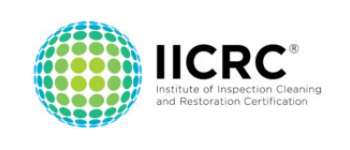Can You Paint Over Water Damage?

Water damage can be frustrating, even if it’s just a small water stain or a small leak. But before you think about painting over a stain to cover it up, you need to first ask yourself how it got there. While painting over water damage might seem like a good way to conceal the problem, it’ll waste your time and money because you’ll only be treating the symptom, not the source of the problem.
Without determining what’s causing the stain, it will soon reappear. Additionally, the water that’s producing the stain will also damage the surface it’s on. The longer you wait to make the proper repairs, the more damage will occur to your South Carolina home and the more expensive it’ll be to fix. Plus, taking care of it immediately will prevent mold growth.
If water stains are on your ceiling, then you may have a roof leak, probably near a vent, vent pipe, chimney, or another area where water is finding its way in. If water stains are by a door or window, it’s probably the fault of deteriorated caulking, rotten wood, or an issue with the door or window itself. Have a professional contractor like Kingsley Water Damage Restoration evaluate and address this for you.
In some cases, damaged materials like drywall and flooring will need to be removed from your South Carolina home. You should always remove drywall that’s crumbling and carpeting that’s moldy.
Once the root cause of the stain has been removed (which could involve something simple like replacing a gasket or washer or something very involved like waterproofing your foundation), let your wall or ceiling dry out completely. Don’t start painting while it’s still damp, otherwise, you’ll risk damaging the existing paint and possibly the wall or ceiling itself. In certain situations, painting over a damp area can cause the paint to bubble. Then, once it dries, it can crack and peel. Depending on the extent of the water damage and how wet the surface is, the paint might not even stick at all.
How to Paint Over a Water Stain
Once the area is completely dry, cover the stain with a high-quality stain blocker (such as Kilz or Zinsser) or an oil-based paint. This creates a waterproof barrier that the water stain won’t be able to penetrate. If you already have an oil-based undercoat or gloss at home, you can save yourself money by using these. Use the undercoat by itself or mix with the gloss to create an effective homemade stain blocker.
Once the first coat is dry, apply a second coat of primer over the stain, spreading out several inches in every direction. Once the primer is dry, you can apply your topcoat of paint. For darker colors, you might be able to paint just the stained area and feather it into the rest of the ceiling or wall. However, for lighter colored paints you should just paint the entire wall for an even finish.
When a Paint Job Won’t Cut It
If you’ve experienced severe water damage, more will be needed than just a coat of paint. As a rule of thumb, if the water damage to your South Carolina home or business is serious enough to warrant an insurance claim, then you shouldn’t try to handle the restoration process on your own. Damage that occurs as a result of DIY restoration efforts is typically not covered by insurance, and restoration work can be hazardous for those who haven’t been trained for the risks associated with working with dirty water, mold, and water-damaged structures.
Fortunately, Kingsley Water Damage Services, a local Colombia, South Carolina company, has the knowledge and equipment needed to properly repair your property. Our IICRC trained and certified specialists are fully insured and have extensive experience dealing with all types of water damage.





